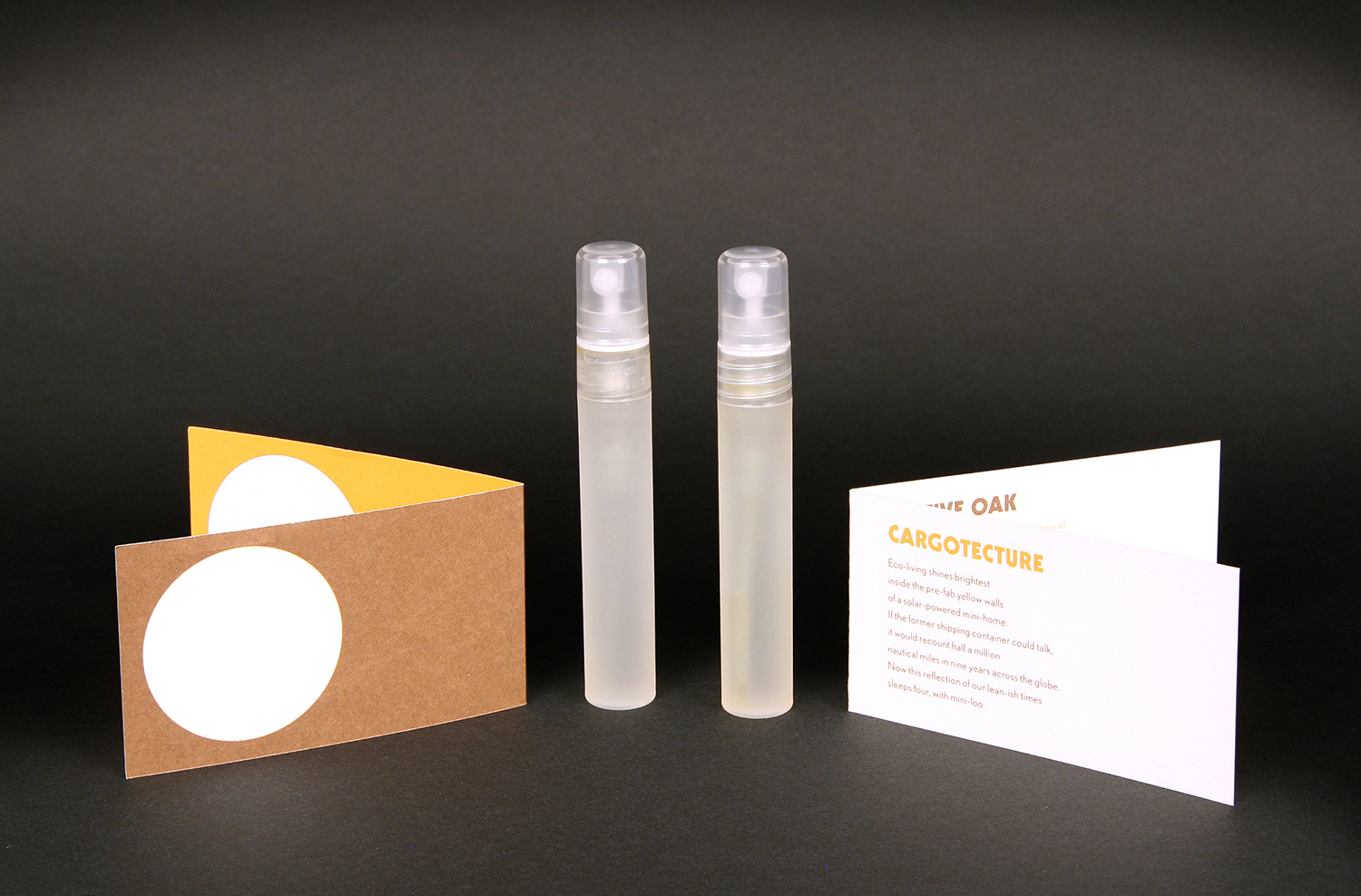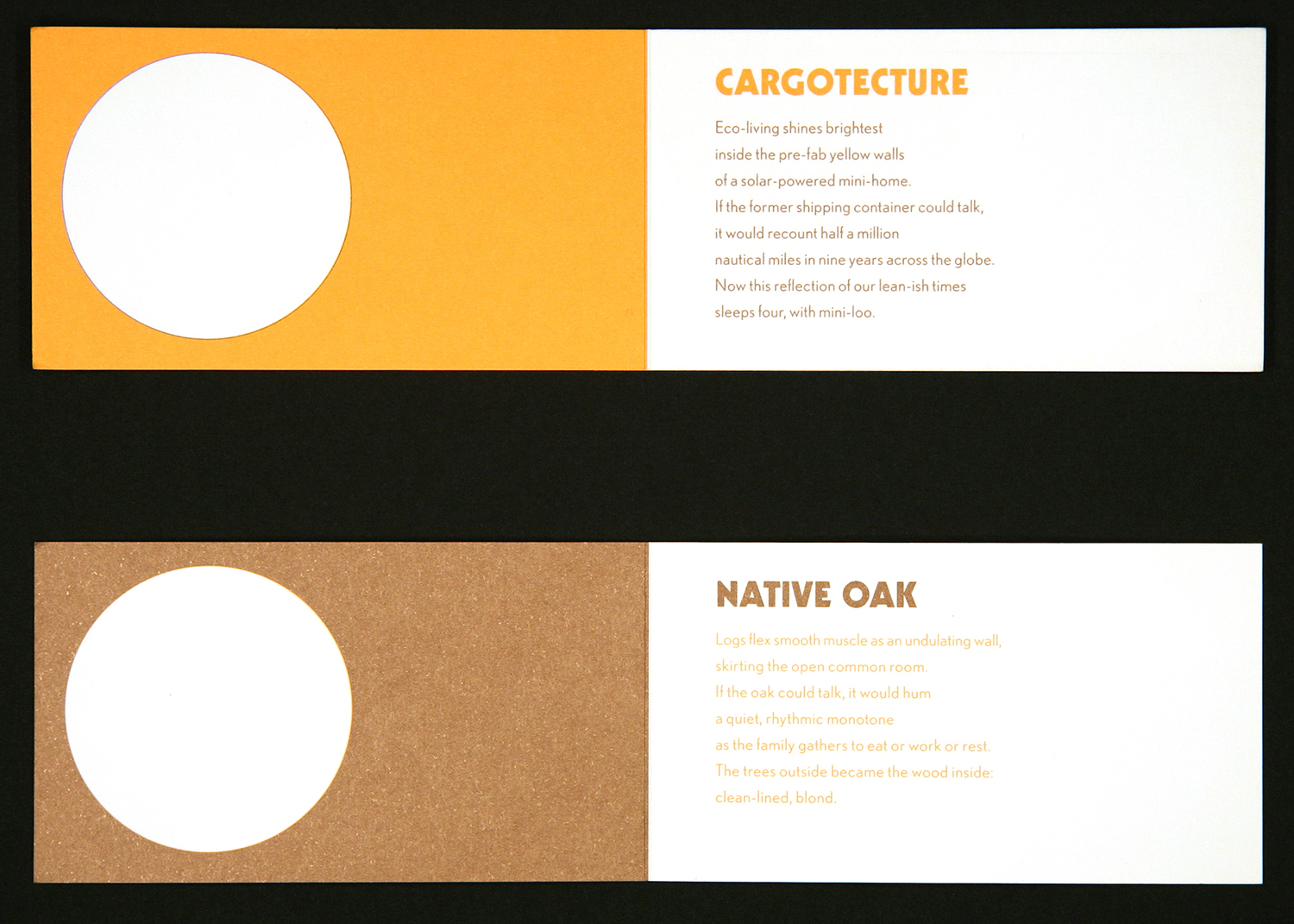Smelling the City


Smelling the City, 2013. This collection was produced in an edition of two, with each edition containing the following materials: 50 two-color lithographs on blotter paper, with two poems on each blotter; one artist's book; two bottles of artist-made fragrance.
This project was inspired by SDMA's charge to Katharine Whitcomb and I to address the active question What does a city need? through the lens of Gustav Stickley's work which was displayed in the museum's galleries. We decided to juxtapose Stickley's utopian vision against the small house movement in current lifestyle architecture and design. Where Stickley's designs for living evolved partially in reaction to Victorian exoticism and clutter, today's small house movement is also borne in reaction to affluent displays of prosperity (suburban McMansions, three-car garages). Both Stickley's methods and the contemporary zeitgeist contain strong elements of DIY and low-impact, "green" materials and construction.
Whitcomb and I are very interested in the particular ways in which Stickley's utopian ideas were organized, disseminated and received. The project evolved with mindfulness of this commercial distillation. Whitcomb's poem, Native Oak describes a Stickley interior with emphasis on the clean, open design elements and native materials. In contrast, Whitcomb's poem, Cargotecture, focuses on the new trend in prefab architecture which recycles shipping containers. Cargotecture is a commercially-voiced poem placing the reader inside the 2011 Sunset Magazine Idea House, a backyard modular home created from a bright-yellow 192-square-foot converted shipping container. Both "visions" are grounded in a dream of harmonious domestic life. My olfactory component interacts with the poems as an avenue of discourse between Stickley's era and today's. The finished project is a fragrance blotter printed with both poems to be sprayed with two scents: one, the olfactory equivalent of the poem, Native Oak, and the other, the olfactory equivalent of the poem, Cargotecture. The blotter is designed so that each scent can be smelled separately in relation to the corresponding poem or folded and smelled together as a meditation on the fleeting nature of what is considered necessary for our dwelling places.


